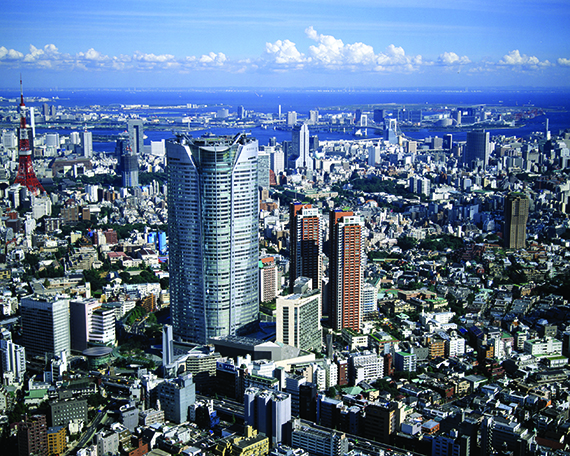
JAPAN SPECIAL: It is hard to overestimate the impact Japanese developer Mori Building has had on the Tokyo, and indeed the Asian, real estate landscape.
The company behind the Shanghai World Financial Center, once the second-tallest building in the world, and the £1.4bn Roppongi Hills project specialises in developing high-rise schemes in densely urban areas.
Now the group has created its own concept of how to develop urban space. This theory, which it calls the Vertical Garden City, aims to do pretty much what it says on the tin. By assembling smaller parcels of land into a large block, Mori believes it is better-placed to control the environment around the high-rise.
While pinning down the boss of such a high profile Japanese company is no mean feat, Estates Gazette grabbed a few minutes with Mori’s president and chief executive Shingo Tsuji to find out more about the Vertical Garden City strategy and what the group has planned next for its £10bn portfolio in Japan and its wider vision across South East Asia.
Growing ambition
In its latest financial statement in May, the company’s reported income rose by 24% to ¥57bn (£292m) throughout the fiscal year to March 2015.
It also reported a 4% decrease in operating revenue to ¥255.7bn (£1.32bn), which it attributes to high property sales the previous year. Accordingly, the increase in operating income of 9% to ¥62.3bn was attributed to strong property leasing.
Despite the drop in sales, the fundamentals remain strong. The developer has recently finished several big projects in Tokyo city centre, with plans for 10 more.
Mori is the landlord of more than 100 buildings in the city.
The Roppongi Hills project was billed at Japan’s biggest office tower at the time it was built, with a gross floor area of 3.9m sq ft, top-notch tenants such as Goldman Sachs and Apple and the country’s first Andaz-branded luxury boutique hotel.
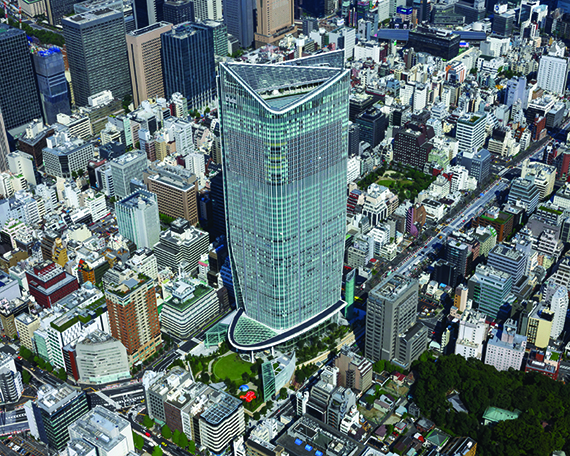
Its most recent project is the 2.6m sq ft Toranomon Hills, which opened in June 2014. The 52-storey tower was a joint development with the Tokyo metropolitan government, and combines shops, offices, apartments, a hotel and conference halls.
Following its strategy of amalgamating smaller parcels of land, the company has several projects in the pipeline, with land neighbouring its Toranomon Hills scheme and a redevelopment project around its Ginza 6-chome project.
With so many projects targeting global occupiers, the Japanese government’s pro-business agenda is something Tsuji welcomes.
“Japan has many regulations over large-scale urban regeneration, so it has taken a long time – more than 10 years – to complete such large city projects,” he says.
“When looking at other projects in the world, I have often been disappointed by the slow pace of development in Japan. But now, I think this is finally improving.”
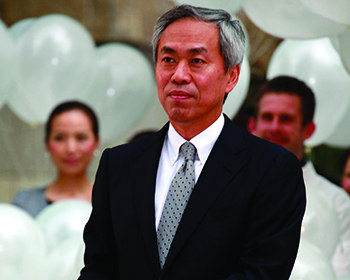
Vertical garden cities
In the spirit of speeding things up, the government has designated special neighbourhoods to attract companies with global operations to set up their Asian headquarters by offering certain incentives.
The land ministry is also putting together a national framework for development, and with the Tokyo Olympics looming, developers such as Mori are confident about their domestic market and its appeal to international tenants.
This is where the Vertical Garden City theory comes in.
The approach has certainly helped the company keep its projects relatively green, leaving more ground space free for parks around the base of the building.
It also means that projects such as the Roppongi Hills Mori Art Museum can incorporate roof gardens, wastewater recycling, rice and vegetable gardens and efficient heating and cooling systems.
Awareness of green space in the planning of high-rise towers is an oft-neglected element. Mori’s strategy makes it an integral part of the process.
Critics argue, however, that it often involves destroying low-level housing to create this space, and offers residents increasingly little choice except ever-taller skyscrapers in which to live.
Nonetheless, the strategy is designed to use space in such a way that means cities can be both more densely populated and more green at the same time.
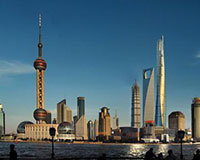
International markets
This very Japanese developer has made a few forays into international markets.
Perhaps most striking is its Shanghai World Financial Center (SWFC), which is one of three super-tall landmark towers on the city’s Pudong skyline.
The dynamic, mixed-use, 101-storey development stands at 1,600ft tall, and is known informally as the ‘bottle opener’, given its distinctive shape. Reportedly, the trapezoid aperture at the top of the building was originally circular, before pressure from Chinese officials forced its redesign because they considered it to be too similar to the Japanese flag.
It is now at risk of being dwarfed by Gensler’s neighbouring Shanghai Tower, with a height of more than 2,000ft. When the SWFC topped out in 2007, however, it was the second-tallest building in the world, with the tallest observation deck.
Though such accolades are quickly overtaken, the Park Hyatt Shanghai on the 79th floor is still the second-highest hotel in the world, and the SWFC is now one-third of
the world’s first adjacent grouping of three super-tall towers.
Mori has also recently opened an office in Singapore, which a spokesman says is intended to allow it to “increase our efforts into south-eastern Asia”.
For now, though, the focus is back on home markets where, along with partners, Mori plans 10 more high-rise projects worth about $10bn (£6.4bn) in total. The target is to finish all these projects in 10 years.
Driving forward
In August last year, the company sold its longest bond so far, raising ¥13bn in 10-year bonds, offering three times the average yield premium for Japanese peers at 34 basis points over government debt.
The company said at the time it had decided on longer maturity bonds to lock in borrowing costs, and will use the funds to repay debt.
And in its financial statement released at the end of May, the company warned of a projected 25% drop in its net income for the 2016 fiscal year. It is forecasting this because of the “recoil effect caused by the lowering of Japan’s corporate tax rate”.
Nonetheless, the picture is healthy overall, with a modest 1% increase in operating revenue and ordinary income predicted, and a 9% growth foreseen in operating income.
“Mori is planning to drive several new projects over the next 10 years, across 22ha of land and bringing 2.2 sq m of leasable floor space,” says Tsuji.
“We are making efforts to develop these schemes with other projects that are taking place in the neighbouring areas, such as the creation of a new subway station, and integrate that into our plans.”
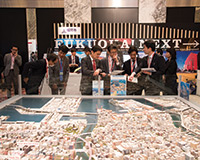
Working with the local government on transport-related development is just one sign of the closeness between the developer and the authorities.
Tsuji gave the closing speech at the government-supported MIPIM Japan conference last month, where he made a rallying call for global occupiers, investors and tourists to come to his country.
“I believe Japan and Tokyo will be truly exciting markets for many global investors,” he concluded.
“It might have been perceived as not very open before, but with both these new special zones, and preparation for the 2020 Olympics, Japan is opening on two fronts.”
And as Japan opens its doors wider, Mori looks well poised to remain front and centre in the market.










